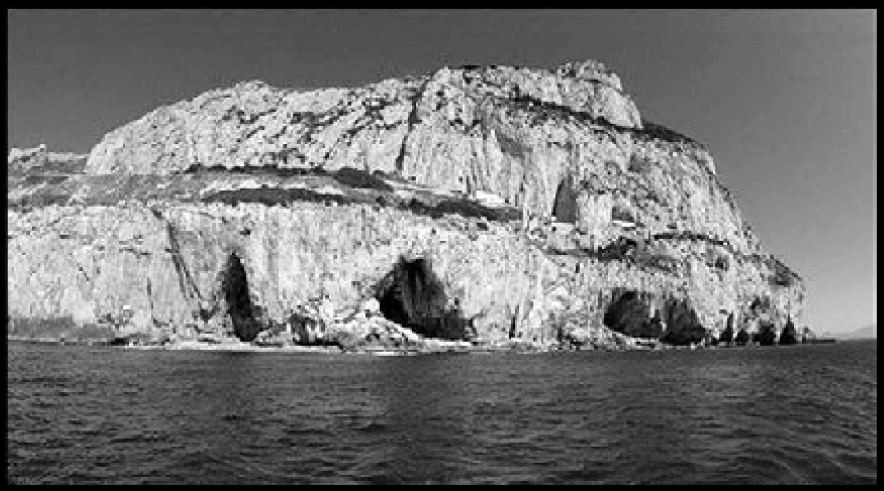extermination, 10
The last Neanderthal bites the dust
Despite the sporadic late flowering of Neanderthal culture, the last Châtelperron assemblages (at Arcy-sur-Cure and Quinçay, in France) vanish about 34,000 years ago. Among the last surviving populations of European Neanderthals are those from Gibraltar, dated to 28,000 years ago, but with some bone samples reliably dated as recently as 24,000 years ago. With them disappeared forever one of the toughest and most durable hominid species of all time.
The reason why the European Neanderthal population became extinct when the Levantine human population recovered after its own near-extinction event was, I think, because the persecution of European Neanderthals by Cro-Magnons was not based on dietary predation. When predation is simply about killing for food, prey species usually recover in number when they are no longer worth the time and effort to hunt.
But if the objective of Cro-Magnon aggression was not dietary, then the cyclical pattern that normally allows the prey species to recover its numbers would not occur. Because NP theory nominates genocide as the objective of the European territorial incursion, it predicts that successive generations of humans kept relentlessly hunting Neanderthals throughout their entire European habitat until they were eliminated.
While the genocide model may seem somewhat melodramatic to those who take an anthropocentric view of humanity, it is a lynchpin of NP theory. Ironically, it is also one of the few elements of NP theory that accords with conventional anthropological thinking. The idea that Cro-Magnons killed off the European Neanderthals is a view held by a sizable proportion of academics.
In anthropological terms, it is known somewhat euphemistically as the competitive replacement model, and it was first proposed by French palaeontologist Marcellin Boule (the first person to publish an analysis of a Neanderthal) in 1912.
Claudio Cioffi-Revilla, a computational social scientist from George Mason University in Virginia, calls the replacement a “large-scale violent eviction accompanied by purposive massacre” and defines it as history’s first genocide.
Another supporter of competitive replacement is Jared Diamond, who points out in his book The Third Chimpanzee that the genocidal replacement of Neanderthals by modern humans is similar to modern human patterns of behaviour that occur whenever people with advanced technology invade the territory of less advanced people.
The competitive replacement model is not, however, universally accepted and one of the reasons for this is that it does not explain why Cro-Magnons eradicated the Neanderthals. NP theory’s contribution to the competitive replacement model is to provide the all-important motive—the hatred of a former prey species of its erstwhile predator.
Another criticism of the competitive replacement model is a familiar one—that there are no mass graves or other unequivocal evidence of a genocide in either the Levant or Europe. We learn from watching shows like CSI that violent crimes usually leave some forensic evidence, so we half expect to unearth mass graves or other unequivocal forensic evidence. Realistically though, it cannot be expected that archaeologists will dig up a pile of 40,000-year-old Neanderthal bones from some long-forgotten massacre site, complete with Cro-Magnon arrowheads embedded in their ribs.
Usually, the only time we find fossilised hominid bones is when they’ve been purposely buried or thrown into a bog. Unlike modern massacres like Srebrenica, where an estimated 8000 men and boys were shot and buried during the Bosnian War, Cro-Magnons would not be concerned about burying their victims. It is more likely that Neanderthals would be left to rot at the kill site, or butchered and consumed for their meat. […]
Ultimately, the only certainty is that by 24,000 years ago, the Neanderthals had disappeared forever. […] The world had changed. After more than 75,000 years, the great struggle was over. For the first time—humans were alone. They were now the undisputed ‘masters of the universe’.

Gorham’s Cave (centre), Gibraltar. Although the water now laps at its entrance, when Neanderthals lived there the sea level was much lower. According to Clive Finlayson, this is where some of the last European Neanderthals held out, hunting seal, dolphin and fish.
____________
N.B. You can read the first 35 pages of Vendramini’s book here.